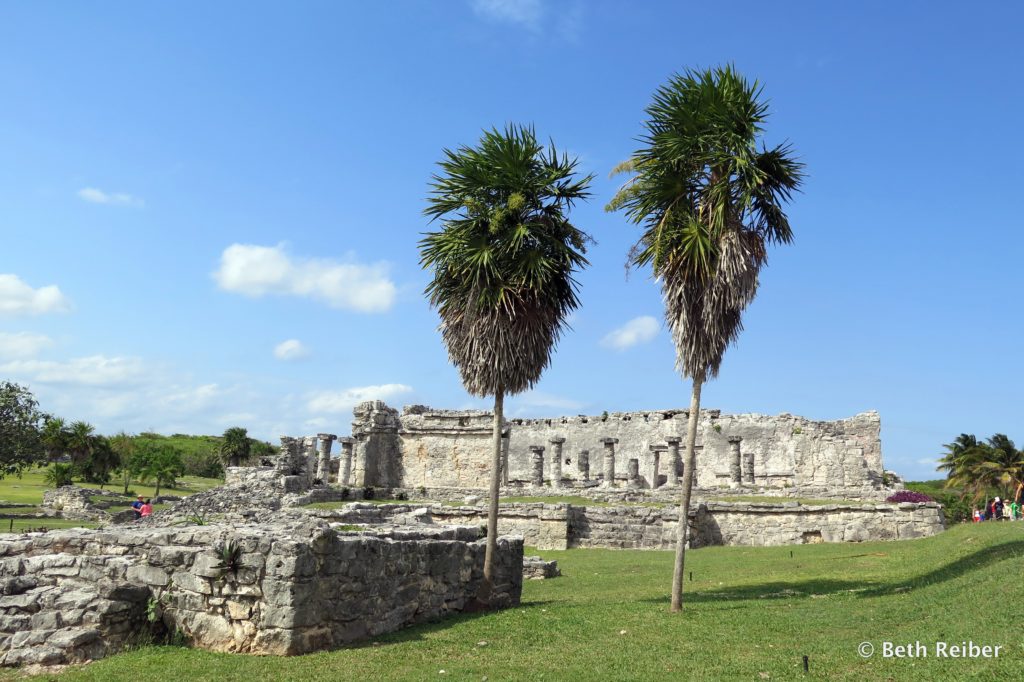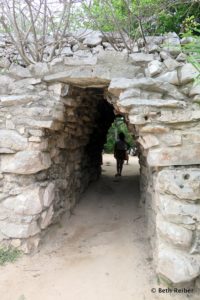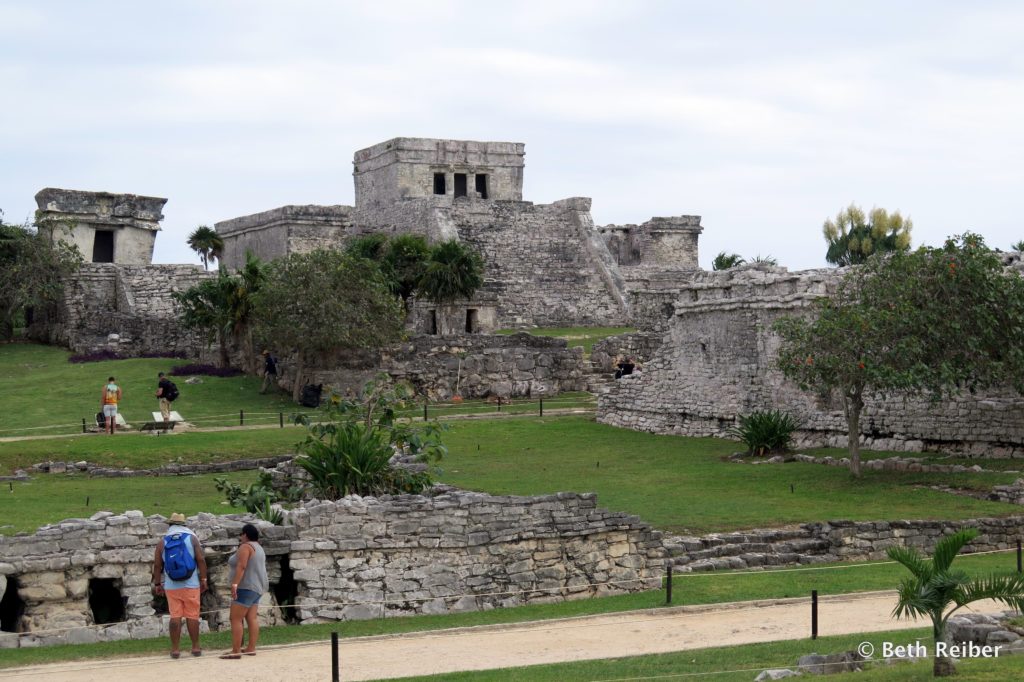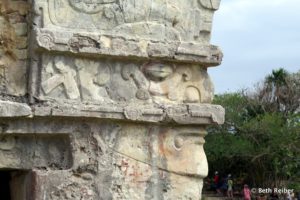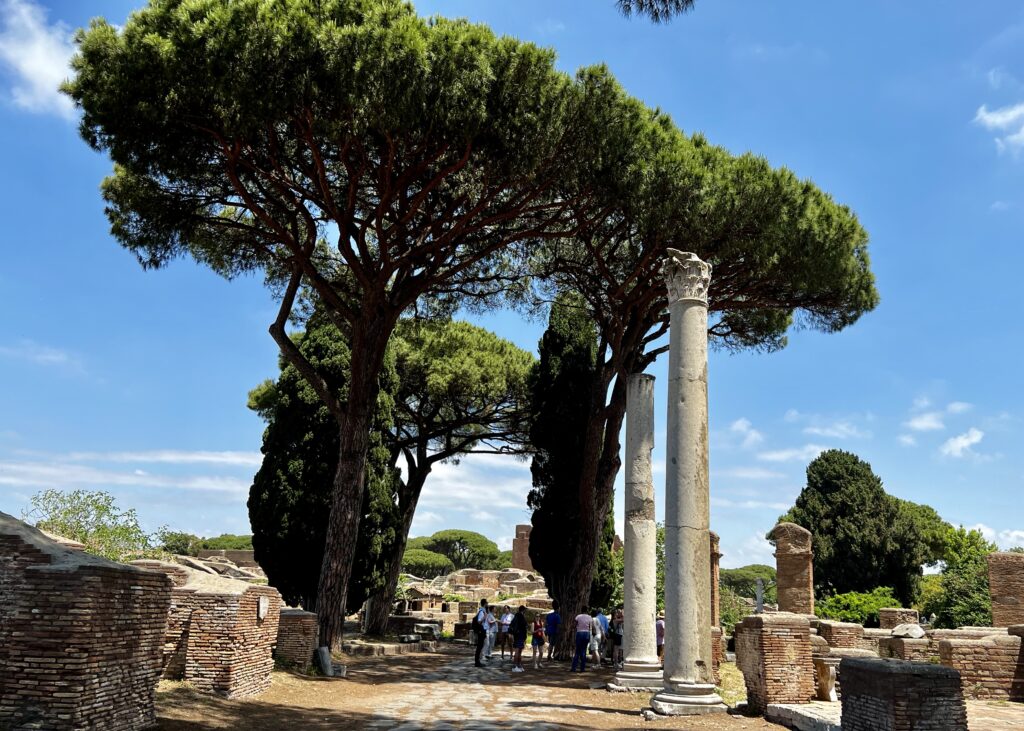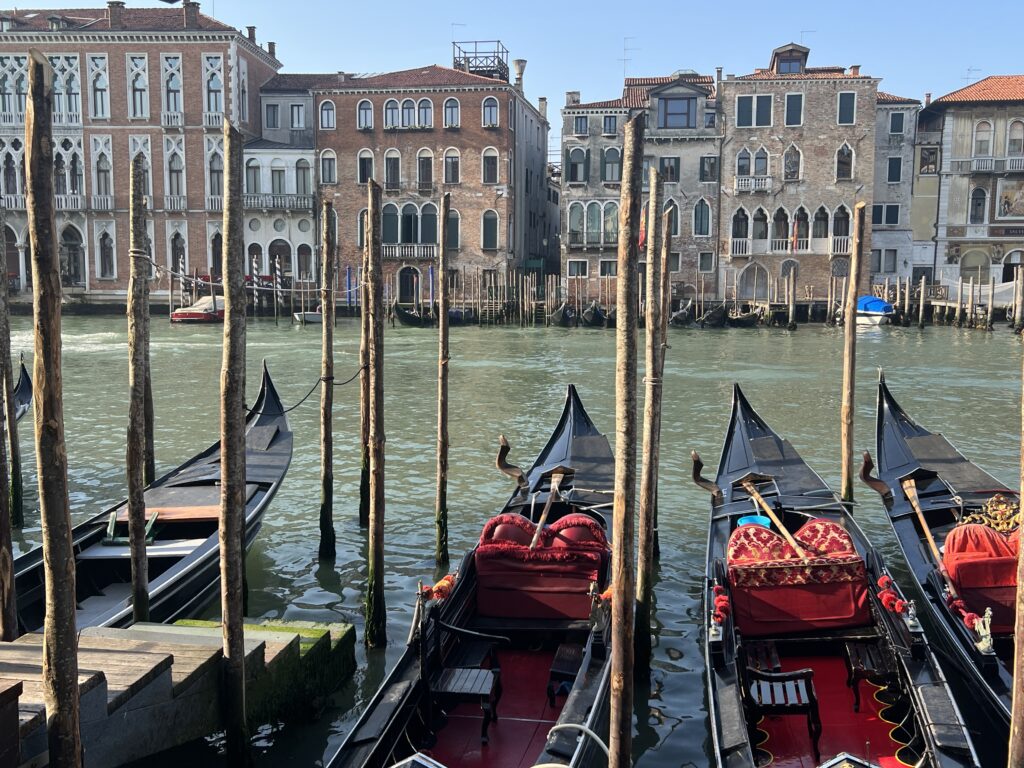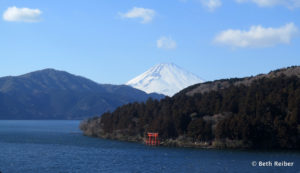It’s hard to visualize a bustling town when all that’s left are ruins. But Tulum’s Maya ruins, located about an hour south of Playa del Carmen on Mexico’s Yucatan coast, are remarkably preserved, with sixty limestone structures that include temples and homes for nobility and priests, a central square, grassy fields and jumbled
rocks marking where other buildings once stood. Because the ruins are enclosed on three sides by a limestone wall some 2,500 feet long, up to 22 feet thick and 16 feet high, it’s easy to surmise that the town was constructed to protect itself from enemies. Its fourth side, on a cliff above the sea, hints at its history as a trading center.
But what would I see if I were suddenly transported back some 800 years, back to Tulum’s heyday when it was a sprawling commercial and religious center with several thousand inhabitants? Maybe I’d see a lively market in the main square, where gold, jade, obsidian, salt, textiles and other goods from central Mexico and Central America traded hands. Perhaps I’d have before me not just empty stone buildings, but structures painted a brilliant turquoise blue and some decorated with stone reliefs, pillars and murals, busy with people going about their daily lives.
There would have been water supplied by a cenote and food obtained from fishing, farming and hunting. I might have seen men making dugout canoes or paper from the bark of banyan trees (Maya elite could write and read). I might have encountered a funeral, with the deceased placed in an underground room right inside the family’s home, head pointed to the east and feet pointed west, a powerful metaphor for the sun’s journey across the sky and the circle of life.
I might have also been a horrified witness to a human sacrifice. Usually a slave and usually male, a captive was sometimes held for years until the most auspicious date, when he would have been brought to the temple’s highest platform, laid out on a sacrificial stone and had his beating heart cut out from from his body.
After flourishing between the 13th and 15th centuries, Tulum was abandoned after Spaniards conquered the area in the 1540s. Yet Tulum’s Maya ruins still speak to us, opening a window into the world of Maya life all those years ago. As for my daydreaming about being transported back in time, I would have been a stranger. I might have gotten a good look at that sacrificial stone.
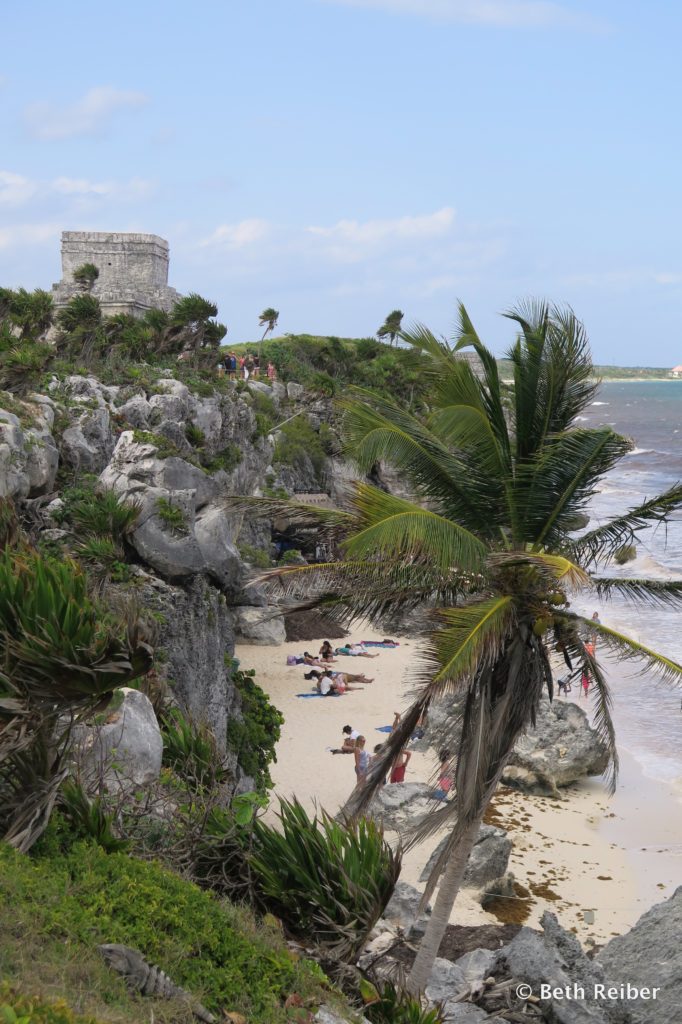
For more on what to do in the area, see my article on Cozumel, below, that was published on the gettingontravel.com website. For more on Mexico, see my blogs How to Make those Mexican Timeshare Spiels work for You and Mexico’s Guanajuato and San Miguel de Allende.
